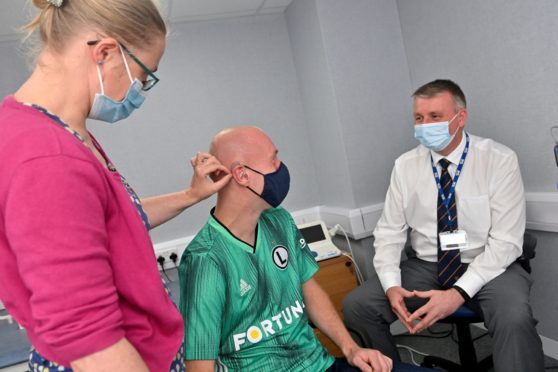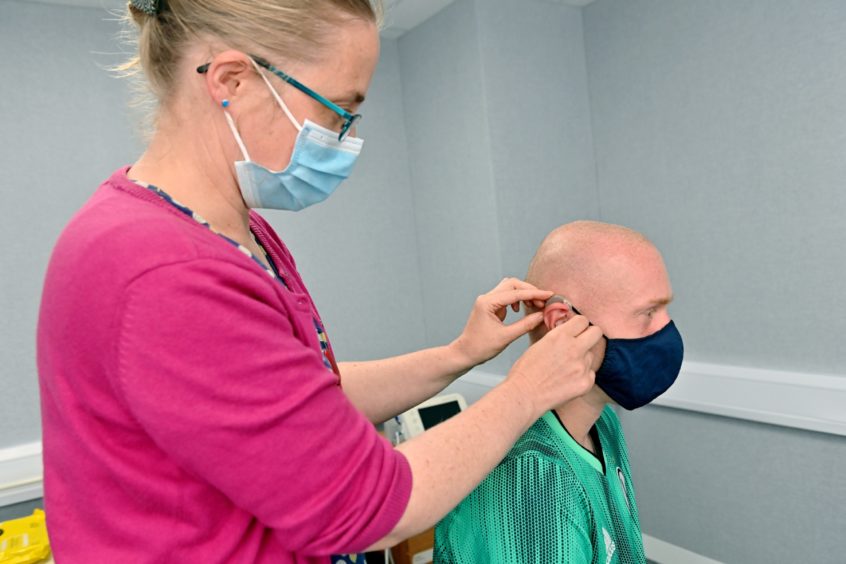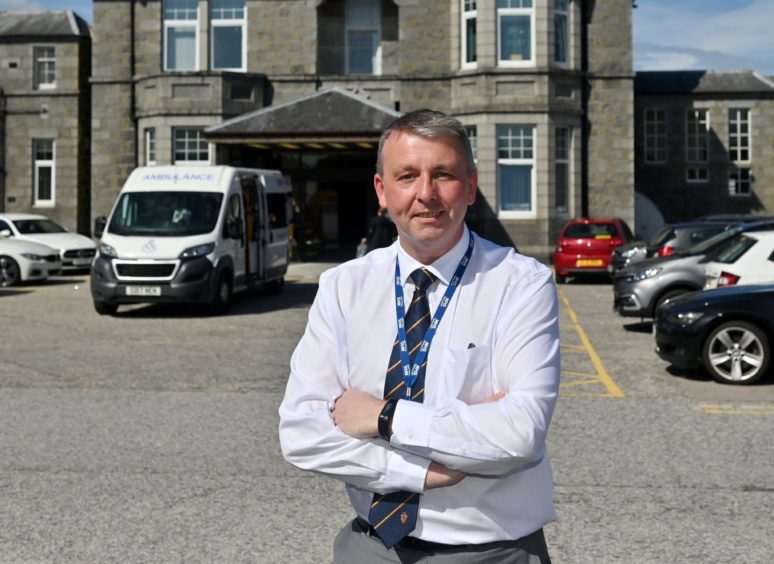The pandemic has called on health services to rethink the way they work, with many getting resourceful – such as the audiology and hearing services at Aberdeen’s Woodend Hospital.
When the pandemic first kicked off, certain types of care were either considered routine or urgent.
The cause for the audiology department fell into the former, and many were unable to meet with patients face-to-face for a long time.
In this window of time, many found themselves unable to visit the hospital as they usually would get new batteries, tubes or have minor repairs to their hearing aids done.
The easing of lockdown has helped the department reevaluate the way they would work – moving away from a drop-in approach to appointment only.
This allows the team to effectively and efficiently triage their patients and monitor the number of patients on any given day.
When lines are busy, a voicemail service can now help people effectively request what they need, set to arrive in the post within the next two days – all while reducing the footfall in the actual hospital.
‘Many needing repairs were in limbo’
The audiology department tried to adapt their services via video consults and posting hearing aids without prior fitting appointments.
Mark Mitchell, head of Audiology services, said: “Anyone who had a hearing aid during this period were the ones in limbo – they were unable to pay a visit to the hospital.”
As a result, the service had to get inventive and came up with drive-by repairs.
This would consist of the patient driving up to Woodend Hospital, someone from the department going up to the patient’s car and taking with them the faulty hearing aid.
“And I argued very strongly that if you have the combination of untreated hearing loss, plus social isolation possibly leads to increased cognitive decline,” he added.
“Because you’re having to put more taxation on your working memory and attention.
“The lack of stimulation from hearing encourages social isolation. It was on that basis that we’re able to say that this had to be classed as urgent.
“The two-metre rule applied, staggered appointment times, how could you realistically increase your activity levels if you can only get so many people in the waiting room.”
Lockdown’s effect on hearing loss
With the pandemic and the introduction to wearing mandatory face coverings, came the backlash for many who rely on non-verbal cues, facial expressions and lip reading to communicate
Mr Mitchell said masks have been a “massive factor” in more people getting in touch with the service.
He added: “But I think beyond that, especially for more elderly patients, the combination of social isolation plus lack of hearing aid is increasing their cognitive strain – it’s like a triple whammy.”
Over a number of years, patients gradually acclimatise to a certain hearing level until they decide they need to do something about it – this could happen to any age group.
“Hearing aids are often perceived as ageist, but we see all manner of patients. We fit hearing aids to young babies, it’s right across the board,” Mr Mitchell said.
At his consultation, Adrian Wiechowski, 32, said he was happy to have his hearing aid fitted after having trouble communicating throughout the pandemic.
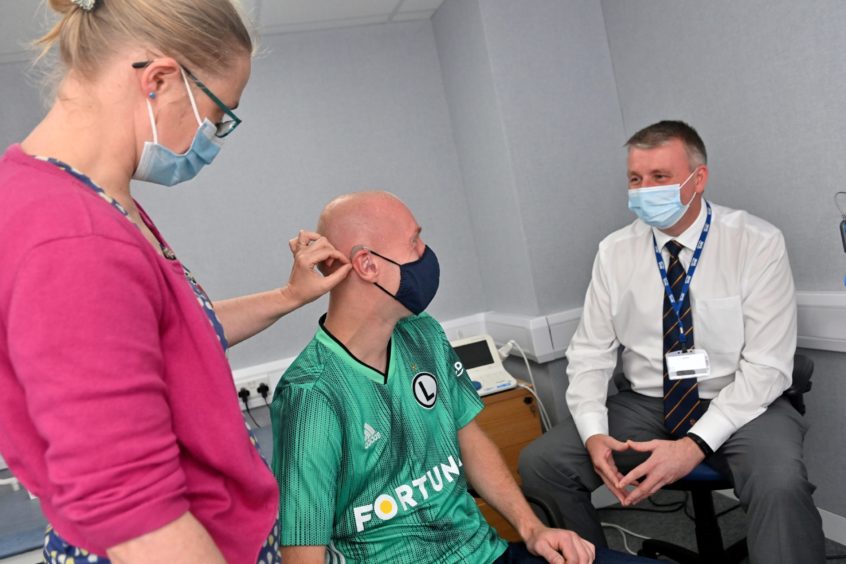
“My girlfriend was the one to motivate me to get it done,” he added.
“It really made my life difficult because I work with people and I’m around people all the time, and sometimes it’s hard to hear them.”
The difference was nearly instantaneous for Adrian, who needed Mr Mitchell to lower his mask during the consultation in order to understand him.
After having his hearing aid fitted, Adrian was able to hear Mr Mitchell with his mask on, while facing the opposite side of the room.
‘We have to box clever our way of working’
“We want to see patients and we are seeing patients face to face, but we want to reduce what you might call unnecessary footfall,” Mr Mitchell explained.
“Why would a patient, want to come here for batteries and tubes when we’ve demonstrated to have a very effective postal service.
“Our postal service has received lots of plaudits from patients where we’ve never had so many compliments on it.
“We have to box clever. We are trying to maximise our activities through scheduled planned care that we know about.
“And if patients were turn up unannounced, we would try and see if can attend to them.
“But if we are fully active, which we’re not far away from being, then we might say we won’t have anybody to see you.”
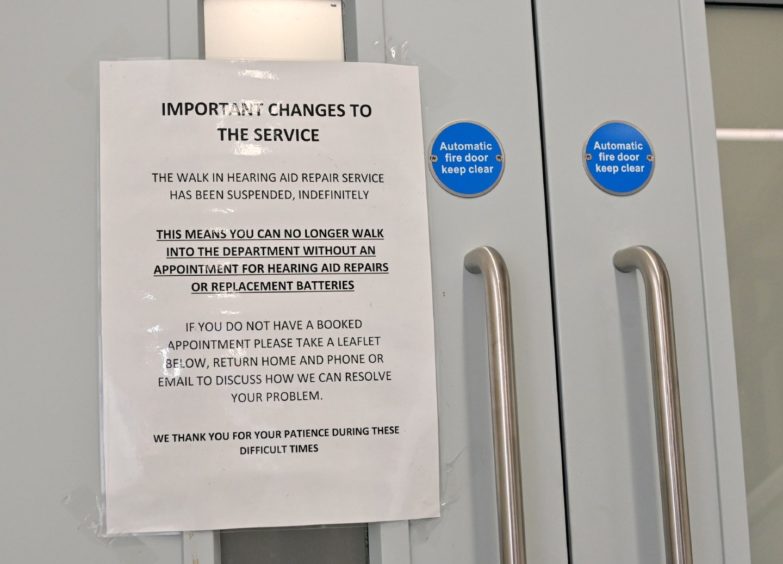
The pandemic has taught them that there are some ways of working that worked and didn’t.
He said the most efficient way to have minor issues solved for those with hearing aids was through appointments.
To book an appointment call 01224 556200, to request batteries, tubes, spare parts and more, phone 01224 556158.
